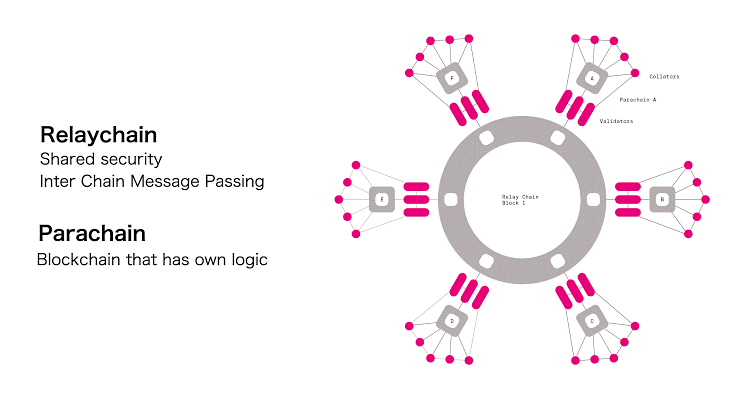News
Cosmos vs Polkadot: Can the Interoperability Protocols Coexist?
Summary: Cosmos and Polkadot are the two leaders in the blockchain interoperability sector. Even though they appear to be competitors at first, they both serve a unique purpose in the cryptocurrency space, and may be able to coexist, similar to Visa and Mastercard in the credit card industry. Interoperability, the capability for blockchains to interact with ...
Cosmos and Polkadot are the two leaders in the blockchain interoperability sector. Even though they appear to be competitors at first, they both serve a unique purpose in the cryptocurrency space, and may be able to coexist, similar to Visa and Mastercard in the credit card industry.
Interoperability, the capability for blockchains to interact with one another, is one of the most exciting and promising developments in the cryptocurrency space. Right now, there is no way for Bitcoin, for example, to interact with any other blockchain, like Ethereum. This means that there are trillions of dollars that are unable to join the decentralized finance revolution, and that different blockchains cannot leverage one another to create truly decentralized and trustless applications.
Polkadot and Cosmos are two of the biggest projects aiming to fix this problem by creating an internet of blockchains. In most cases, two projects with a similar goal would be competing against each other, and only one would eventually reign supreme. However, these two projects take completely different approaches to achieving interoperability and serve different markets, meaning that they may both survive and thrive together. Let’s take a look at both of these projects and analyze their similarities, differences, and role in the cryptocurrency ecosystem to determine how likely it is that they will coexist in the next generation of the internet.
Polkadot was released in May 2020 after multiple years of development and leadership from Ethereum co-founder Gavin Wood. They call themselves “a platform for Web3,” and want to enable the next generation of the web where users are in control of their identity and there are no centralized servers or networks.

To achieve interoperability while also ensuring that each blockchain is independent and sovereign, Polkadot leverages a method involving two different types of blockchains: parachains and a relay chain. The relay chain is the main polkadot blockchain and has DOT as its native asset, which is used for governance and staking. The parachains are blockchains that are able to seamlessly connect with the relay chain, and each blockchain has its own governance, coin, and other typical features of an independent chain. By connecting to the relay chain, coins from one parachain can be sent to another seamlessly, which enables interoperability between many different chains.

Polkadot only supports 100 different parachains, which means that parachains are a scarce resource and projects must bid to acquire one through a process known as a Parachain Loan Auction, or PLO. You can read more about PLOs here. Although this limit does create value for DOT, it also hinders the growth of Polkadot as a complete solution, as it will not be able to connect with every blockchain in existence. Furthermore, for blockchains such as Bitcoin and Ethereum that are already established and will not go through the PLO, Polkadot is creating a bridge that would allow these chains to still be able to interact with the rest of Polkadot.
Cosmos was released in 2019 by the software company Tendermint. Before creating Cosmos, Tendermint released a consensus mechanism, also called Tendermint, that simplified the process of creating a blockchain. Before Tendermint was created, building a blockchain was a highly complex process that involved lots of steps, including creating a consensus mechanism and having a network of computers ready to act as validators. Tendermint simplified this process by removing the need to develop consensus methods and networks, and allows developers to focus solely on application development. Tendermint is capable of handling hundreds of transactions per second at low fees, and offers instant finality on transactions, meaning there is no need to wait for a certain number of confirmations.

Tendermint, along with the Cosmos Software Development Kit, has been incredibly popular and is used by projects like the Binance Smart Chain, Crypto.com, Terra, and Kava. Cosmos and its ATOM token aim to create a hub where all Tendermint blockchains can be interoperable with one another. This is similar to Polkadot’s relay chain, but only for Tendermint blockchains.

Much like Polkadot, Cosmos is also building bridges to non-Tendermint blockchains so coins like ETH and BTC can be freely traded in the Cosmos Hub.
Since Parachains are not compatible with Cosmos, and Tendermint chains are not compatible with Polkadot, these two projects will be serving completely different markets, even though their goals are similar. Their only area of overlap is in their support of blockchains like Bitcoin and Ethereum.
In the future, both protocols may work together to create a Cosmos-Polkadot bridge, which would create a fully interoperable ecosystem with many of the biggest blockchains. This would be highly complex and would likely not happen for a couple more years, but is most likely planned by both projects.
Even though Polkadot and Cosmos appear to be competitors at first glance, greater inspection leads to the conclusion that they serve different areas of the market. Each will act as a hub for interoperability with a unique set of chains, and both may one day work together to bring full interoperability to the cryptocurrency ecosystem.
By Lincoln Murr
Tags: ATOM,Cosmos,interoperability,Polkadot
Link: Cosmos vs Polkadot: Can the Interoperability Protocols Coexist? [Copy]